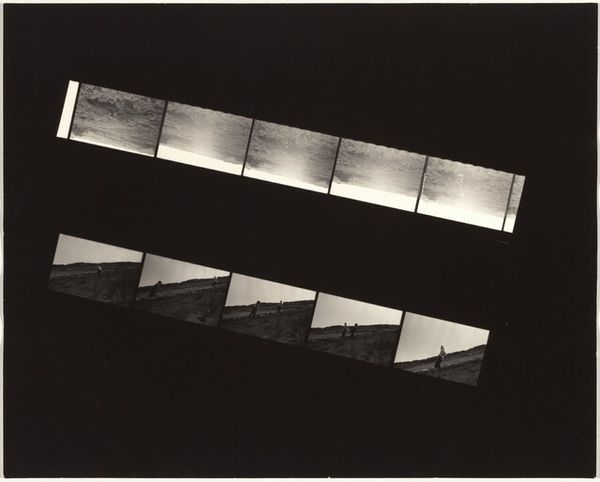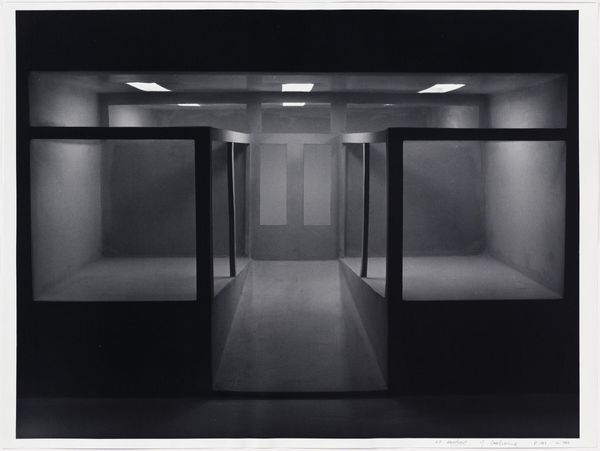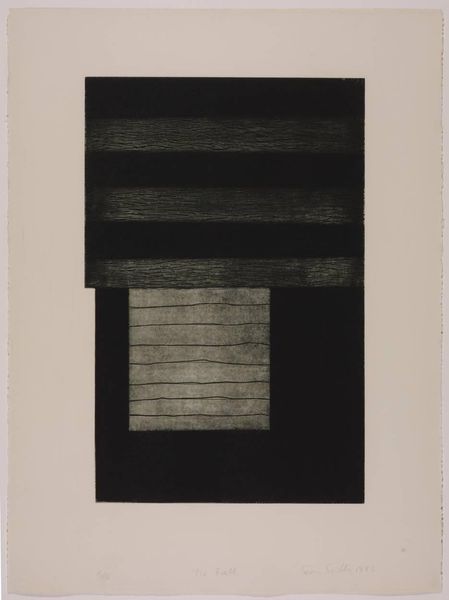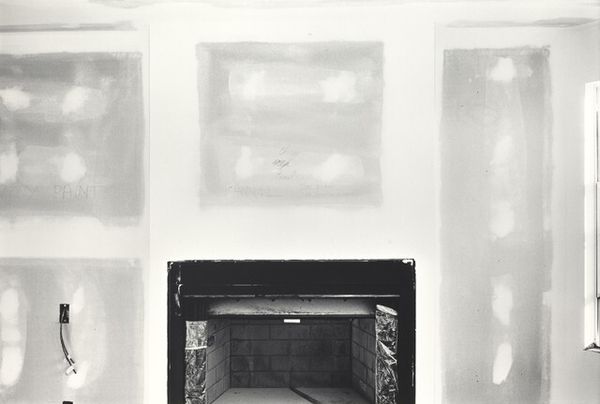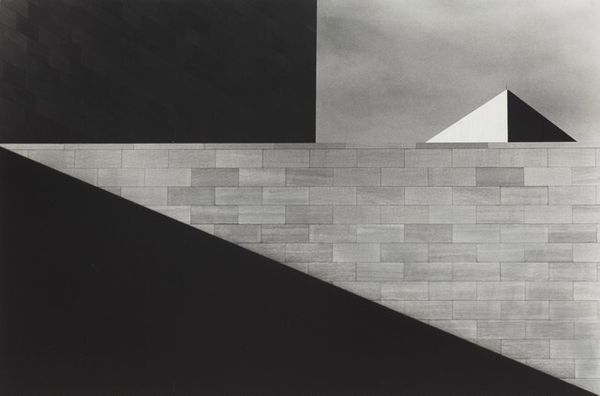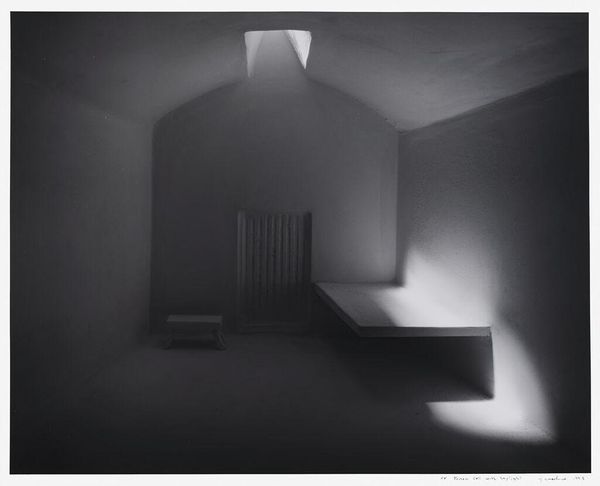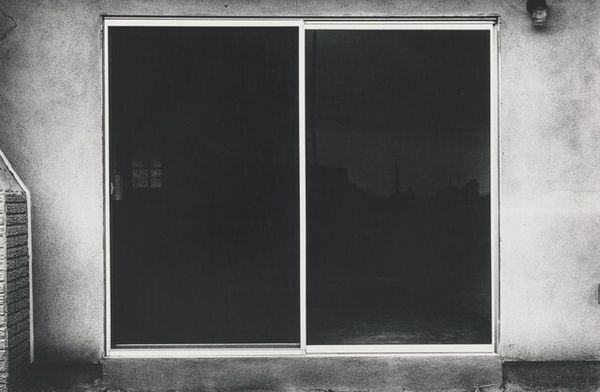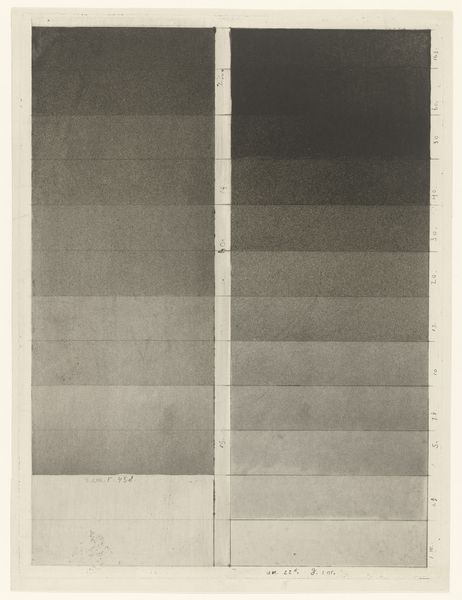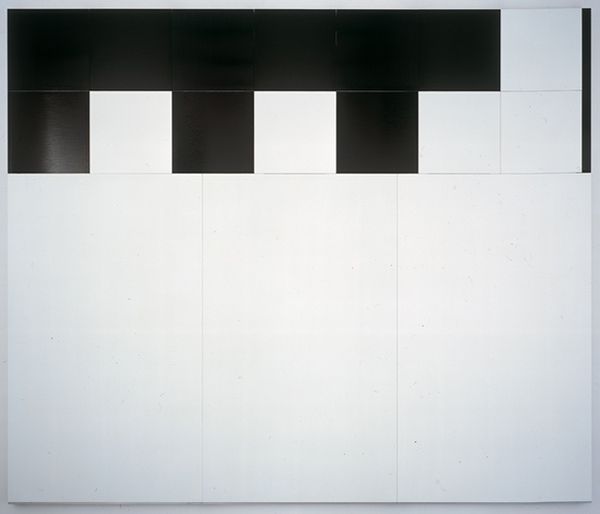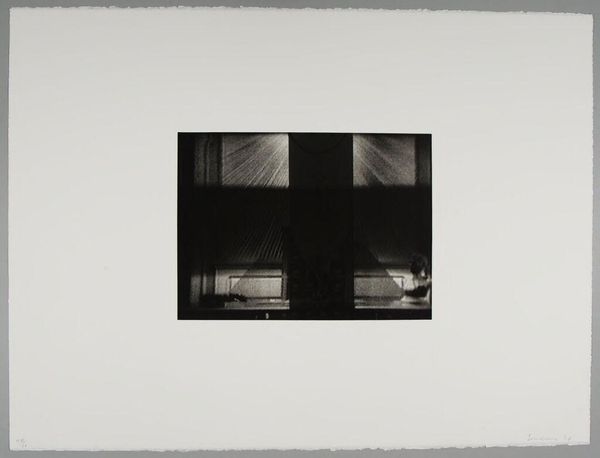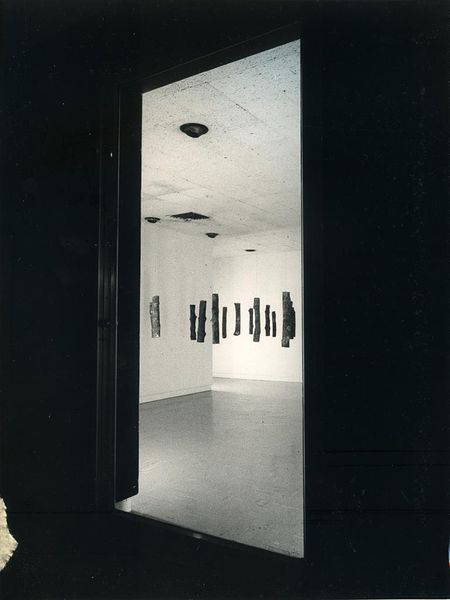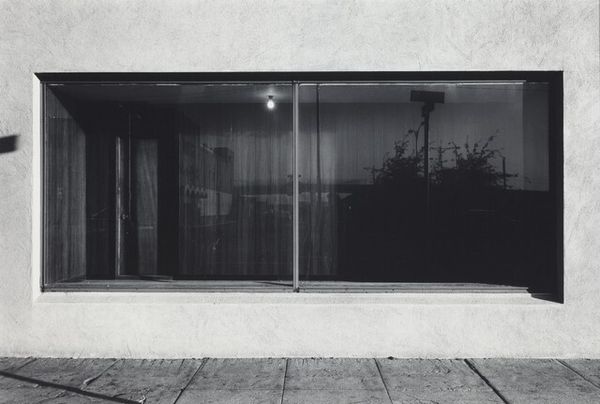
Scrim veil/Black rectangle/Natural light (Whitney Museum of American Art, New York) 1977
0:00
0:00
Copyright: Robert Irwin,Fair Use
Curator: This photograph captures Robert Irwin's site-specific installation, "Scrim veil/Black rectangle/Natural light," created at the Whitney Museum of American Art in 1977. It encapsulates Irwin’s exploration of light, space, and perception. Editor: It's striking. Stark contrasts, and such deliberate geometric interventions. It evokes a strange tension between something being there and almost not being there, it seems… intangible. Curator: Exactly! Irwin often challenges the conventional art object through pieces such as this. Here, the scrim veil and rectangle were positioned to interact with the architecture and the natural light streaming in from the windows, manipulating the viewer's spatial awareness. This intersects with minimalism’s depersonalized approach to production. Editor: The monochrome really pushes that focus. The limitations highlight the material reality, stripping away colour distraction for a raw encounter with spatial dynamics. The black rectangle, it grounds the airiness and anchors a specific social and material context, that of the architectural space of the Whitney itself. Curator: And this intervention reflects broader dialogues occurring in the 70s, when artists and institutions alike began reconsidering the relationship between artwork and the exhibition space. Editor: Precisely. Light, the supposedly ‘immaterial’ element, becomes a palpable, shaped thing—a raw material, crafted by its interaction with scrim, the rectangle and space itself. And how labor goes into creating the conditions to view light! Curator: Considering the Whitney's institutional position, Irwin's work implicitly critiques and enhances it; altering perceptions and expectations within established spaces of artistic engagement. Editor: So true! It makes you consider how galleries can shape, physically and conceptually, our experience of not only art, but reality itself. Curator: A radical gesture, Irwin’s dematerialized practice still challenges us to question our assumptions about art's purpose and presentation. Editor: Well, I find myself looking at my own assumptions now… how materials like light and space require framing in ways I hadn’t considered.
Comments
No comments
Be the first to comment and join the conversation on the ultimate creative platform.
